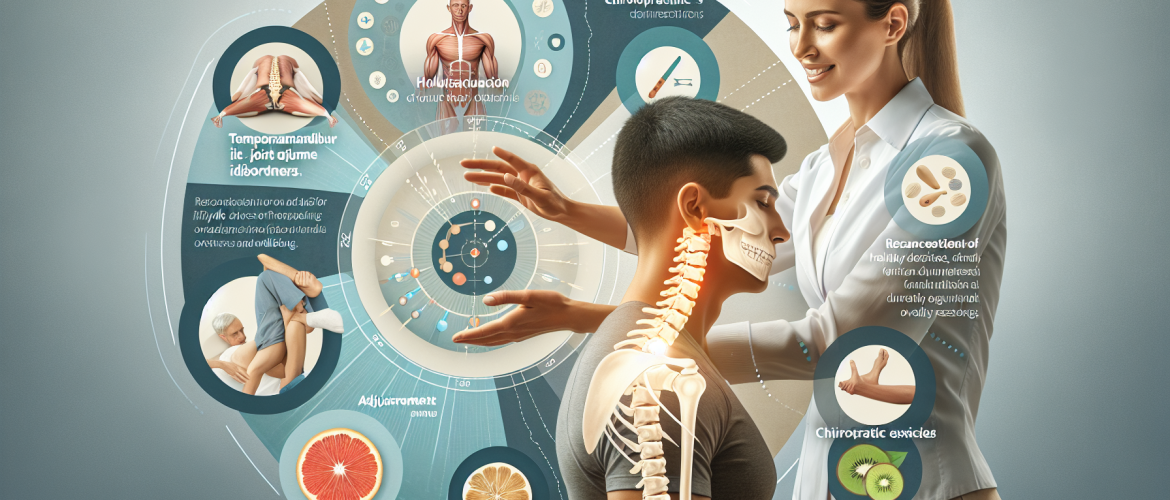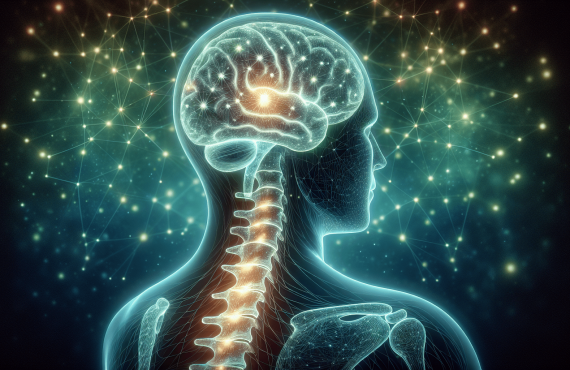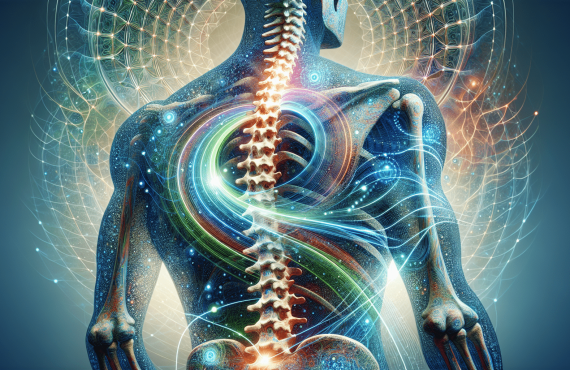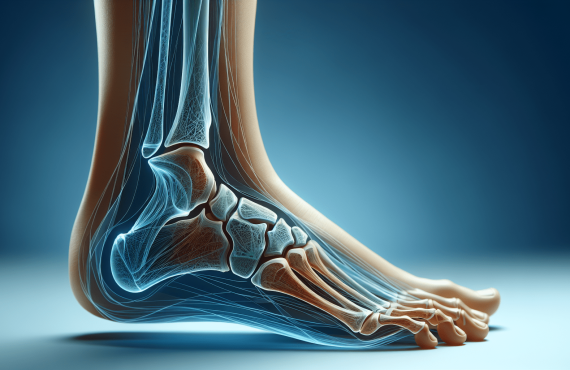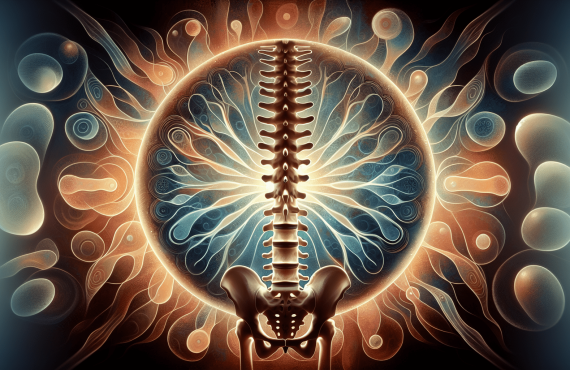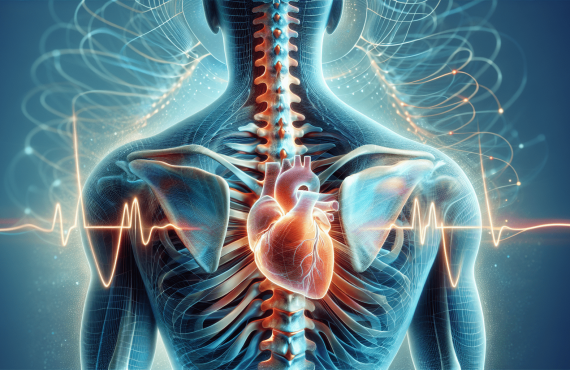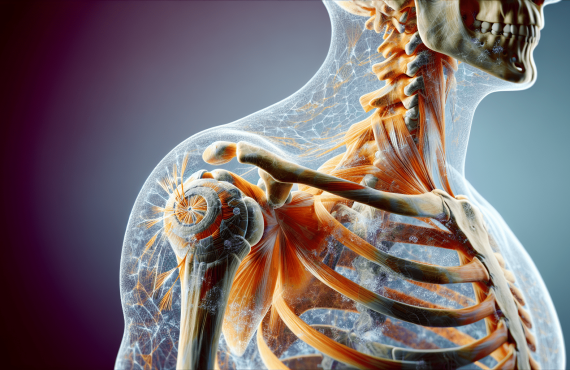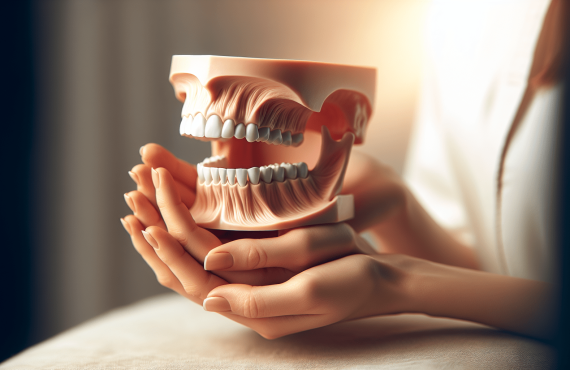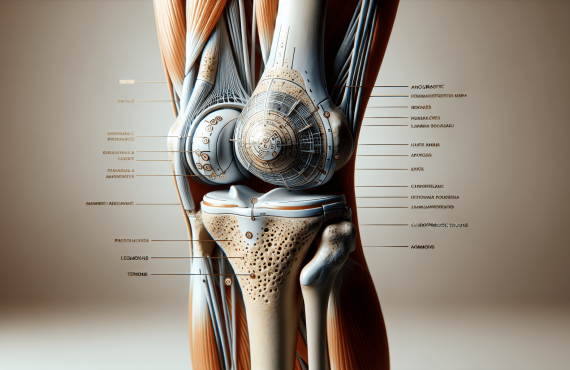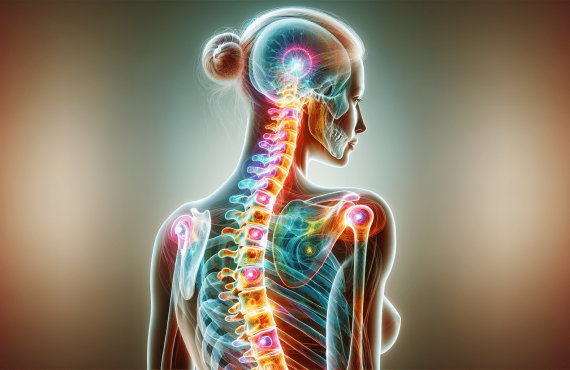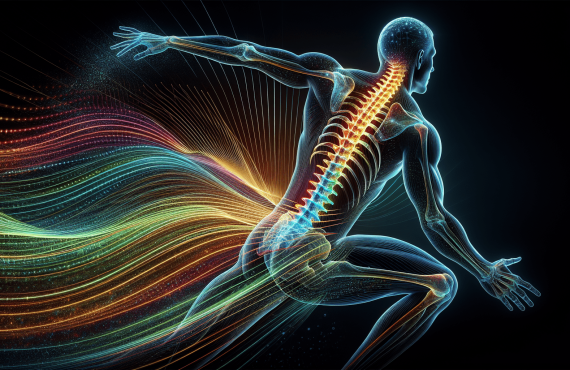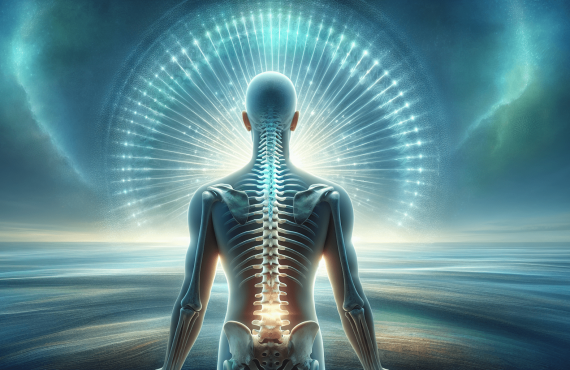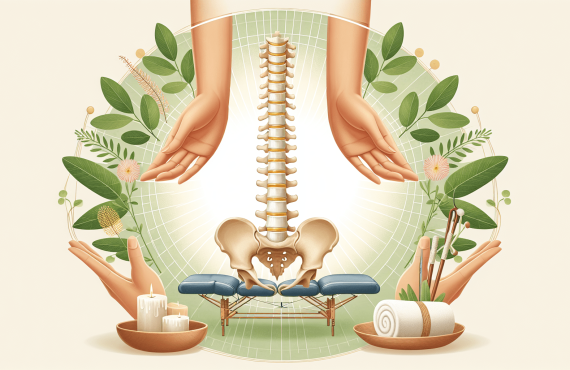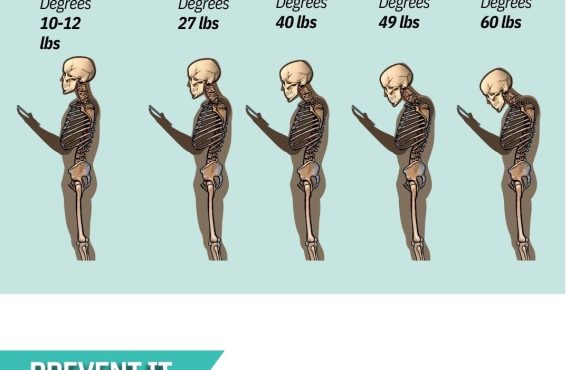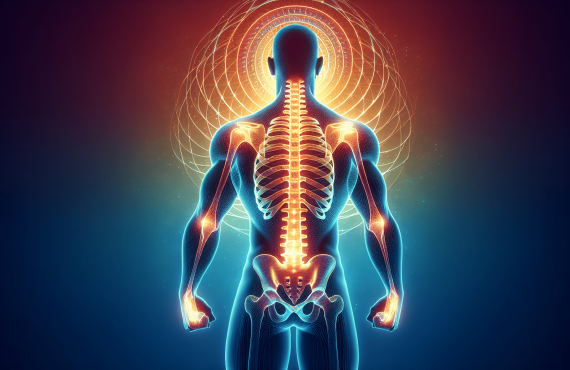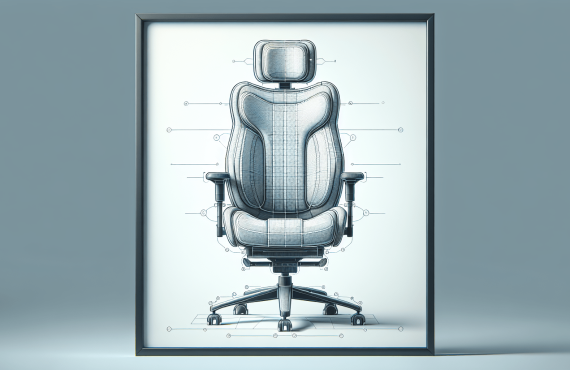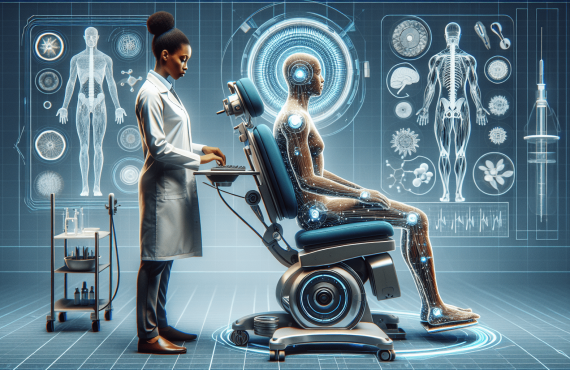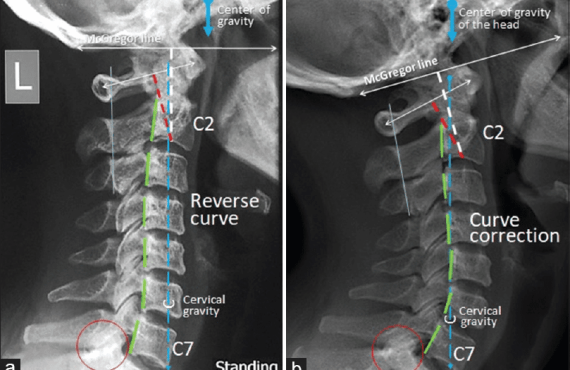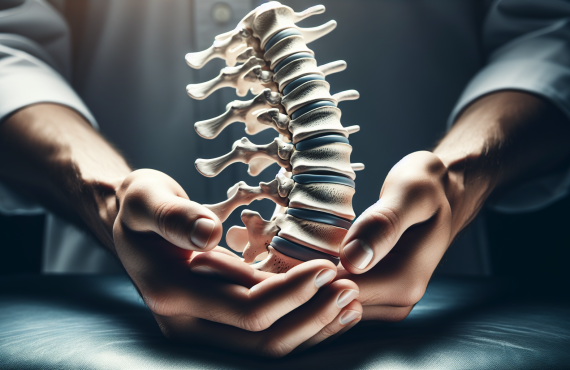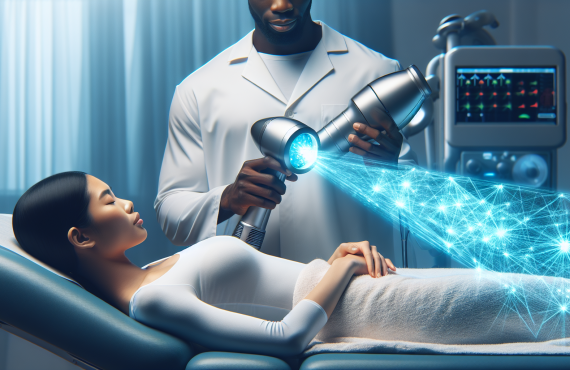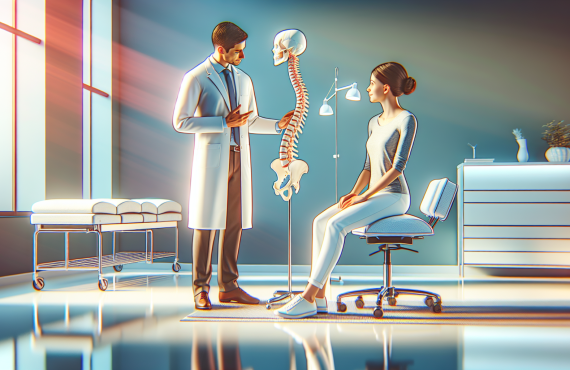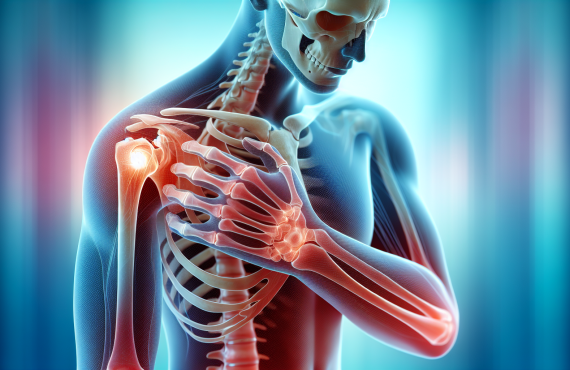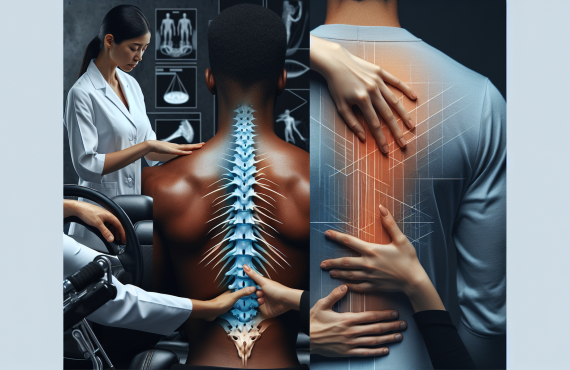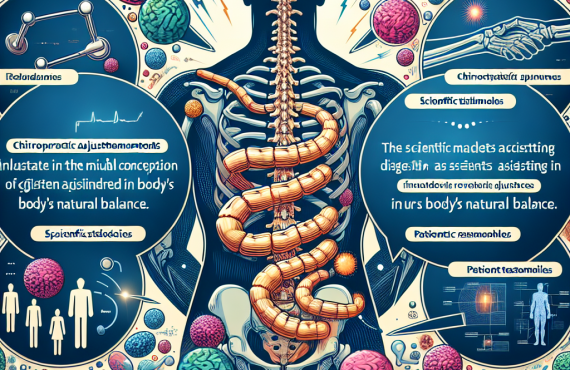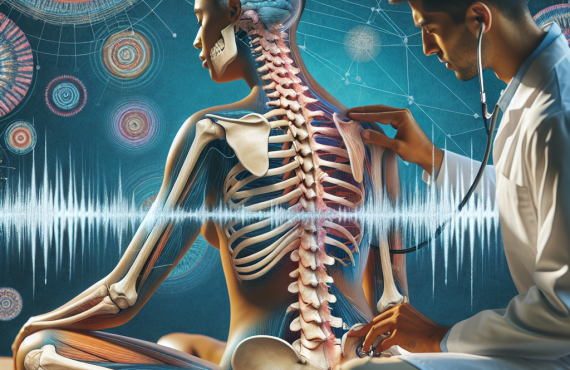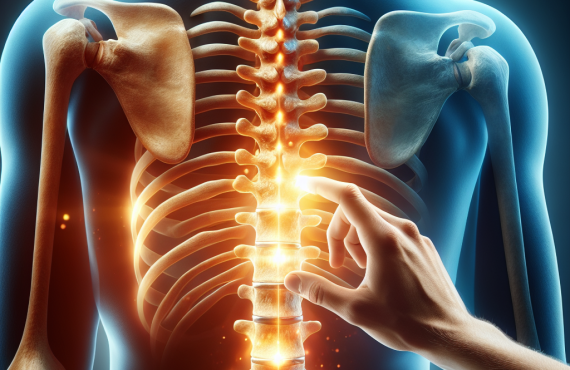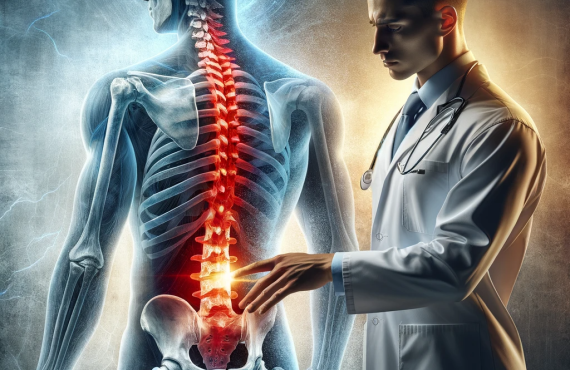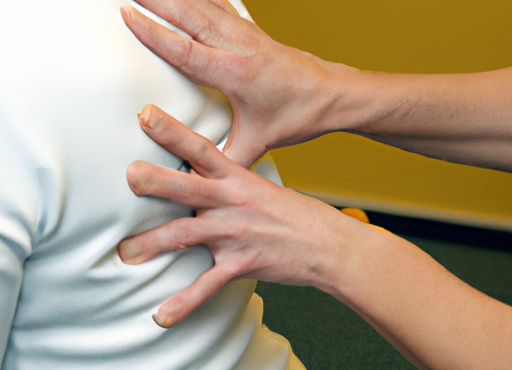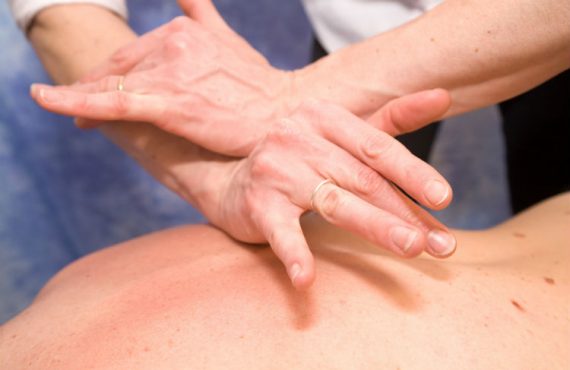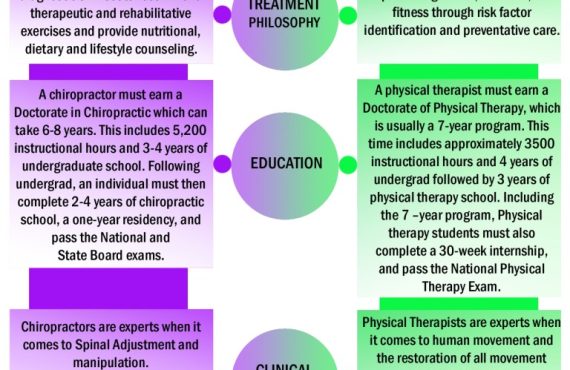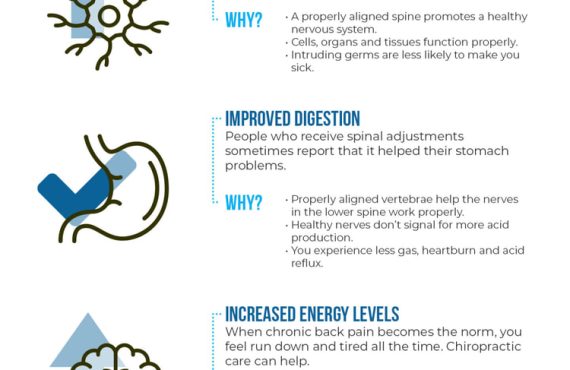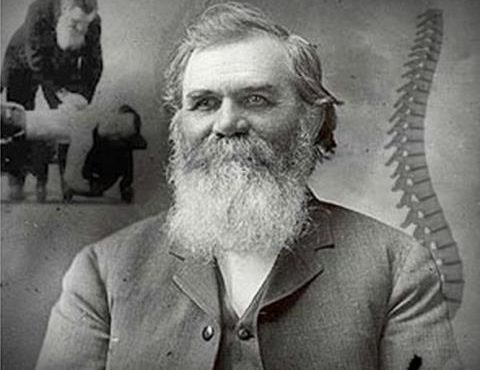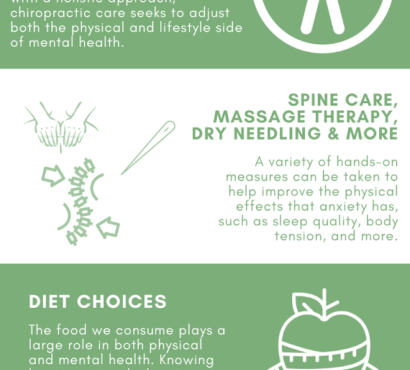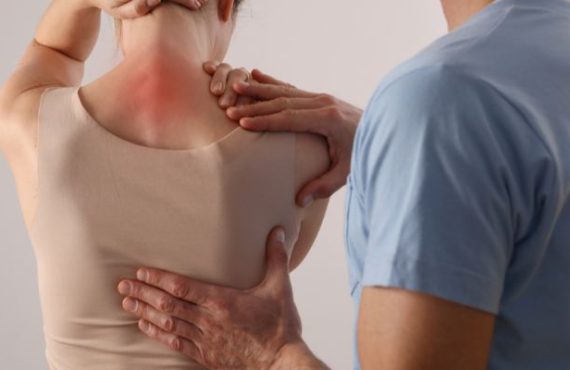Are you struggling with the discomfort and pain caused by TMJ? Look no further than Henry Chiropractic, owned and operated by Dr. Craig Henry, a licensed chiropractor dedicated to improving the health and wellness of patients in Pensacola, FL, and surrounding areas. With a passion for helping others, Dr. Henry utilizes chiropractic care to address TMJ and various other issues such as back and neck pain. Additionally, Dr. Aaron Hixon, another skilled chiropractor at Henry Chiropractic, brings his expertise and training in techniques like Diversified and Myofascial Release Technique to provide comprehensive care. Don’t let TMJ hold you back any longer – seek relief and experience a better quality of life with chiropractic techniques.

Table of Contents
Understanding TMJ
TMJ, or temporomandibular joint disorder, is a condition that affects the jaw joint and surrounding muscles. This disorder can cause a range of symptoms, including jaw pain, difficulty chewing, and clicking or popping noises when opening and closing the mouth. Understanding the causes and symptoms of TMJ disorder is the first step in finding effective treatment options.
Overview of TMJ disorder
The temporomandibular joint is a hinge joint that connects the jawbone to the skull. It allows for the smooth movement of the jaw when eating, speaking, and making facial expressions. However, when this joint becomes misaligned or damaged, it can lead to TMJ disorder.
TMJ disorder is a common condition that affects millions of people worldwide. It can be caused by various factors, including trauma to the jaw, teeth grinding, arthritis, or even stress. It is important to note that TMJ disorder can affect anyone, regardless of age or gender.
Causes of TMJ disorder
There are several potential causes of TMJ disorder. In many cases, it is a combination of factors that contribute to the development of this condition. Some common causes include:
- Trauma or injury to the jaw: Any direct impact to the jaw, such as a car accident or sports injury, can cause TMJ disorder.
- Teeth grinding: This habit, also known as bruxism, can put excessive pressure on the jaw joint, leading to TMJ dysfunction.
- Arthritis: Both osteoarthritis and rheumatoid arthritis can affect the jaw joint and contribute to the development of TMJ disorder.
- Malocclusion: When the upper and lower teeth do not align properly, it can place strain on the jaw joint and lead to TMJ issues.
- Stress: Emotional and psychological stress can cause muscle tension, including in the jaw, which can exacerbate TMJ symptoms.
Symptoms of TMJ disorder
TMJ disorder can manifest in various ways, and the severity of symptoms can vary from person to person. Some common symptoms of TMJ disorder include:
- Jaw pain or tenderness: This is one of the most common symptoms of TMJ disorder and is often felt near the ear or the jaw joint itself.
- Difficulty or discomfort when chewing: TMJ disorder can make it painful or difficult to bite, chew, or open the mouth wide.
- Clicking or popping noises: Many people with TMJ disorder experience clicking, popping, or grating sounds when moving their jaw.
- Headaches or migraines: TMJ dysfunction can cause tension headaches or migraines, which may be accompanied by facial pain.
- Ear pain or fullness: The proximity of the temporomandibular joint to the ear can cause earaches or a feeling of fullness in the ears.
It is important to seek professional help if you suspect you may have TMJ disorder. A chiropractor specializing in TMJ can provide a thorough assessment and develop a personalized treatment plan.
The Role of Chiropractic in Treating TMJ
Chiropractic care offers a holistic and non-invasive approach to treating TMJ disorder. Through specific techniques and adjustments, chiropractors aim to restore proper alignment to the spine, jaw, and surrounding muscles. This can alleviate pain, reduce inflammation, and improve jaw function. Here’s how chiropractic can benefit those suffering from TMJ disorder.
Benefits of chiropractic for TMJ
Chiropractic care for TMJ disorder offers several benefits:
- Non-invasive approach: Chiropractic techniques for TMJ do not involve surgery or medications, making it a safe and natural treatment option.
- Pain relief: Chiropractic adjustments can relieve pressure on the temporomandibular joint, reducing pain and discomfort.
- Improved jaw function: By restoring proper alignment, chiropractic care can help improve jaw mobility and reduce limitations in jaw movement.
- Whole-body wellness: Chiropractic care focuses on the overall well-being of the patient, addressing not only the symptoms but also the underlying causes of TMJ disorder.
- Personalized treatment: Each patient’s TMJ disorder is unique, and chiropractors tailor treatment plans to address individual needs and goals.
Chiropractic techniques for TMJ
Chiropractors use a variety of techniques to treat TMJ disorder. Some of the most common chiropractic techniques for TMJ include:
- Diversified Technique: This hands-on approach involves precise adjustments to the spine and jaw to restore proper alignment.
- Gonstead Spinal Manipulation: This technique focuses on specific spinal adjustments to relieve pressure and restore normal joint function in the jaw.
- Instrument Assisted Soft Tissue Mobilization (IASTM): This technique uses special instruments to effectively mobilize and treat soft tissues, reducing muscle tension and promoting healing.
- Myofascial Release Technique (MRT): This technique targets specific trigger points and areas of muscle tension in the jaw and surrounding areas to alleviate pain and improve jaw function.
How chiropractic addresses the underlying causes of TMJ
Chiropractic care takes a comprehensive approach to treating TMJ disorder by addressing the underlying causes of the condition. Chiropractors understand that TMJ disorder is often a result of muscle imbalances, misalignments in the spine or jaw, or excessive tension in the muscles. Through chiropractic adjustments, soft tissue mobilization, and other techniques, a chiropractor can correct these imbalances and restore proper function to the jaw joint.
By focusing on the root causes of TMJ disorder, chiropractic care aims to provide long-term relief and help patients achieve optimal health and wellness.
Initial Consultation and Assessment
If you suspect you have TMJ disorder, scheduling an initial consultation with a chiropractor who specializes in TMJ treatment is the first step towards finding relief. During this consultation, you can expect the following:
What to expect during the consultation
During the initial consultation, the chiropractor will take the time to listen to your concerns and discuss any symptoms you may be experiencing. They will ask about your medical history, including any previous injuries or conditions that may be related to your TMJ disorder. This information will help them understand your unique situation and develop an appropriate treatment plan.
Thorough examination of the jaw and spine
The chiropractor will perform a comprehensive examination of your jaw and spine to assess your condition fully. This examination may include assessing the alignment of your jaw joint, checking for muscle imbalances, and evaluating your range of motion. The chiropractor may also conduct orthopedic, neurological, and postural evaluations to gather a complete picture of your condition.
Discussion of symptoms and medical history
The chiropractor will ask you detailed questions about your symptoms, including when they started, how they have progressed, and what makes them better or worse. They will also review your medical history, paying close attention to any previous TMJ treatments or medications you have tried. This information will guide the chiropractor in developing an individualized treatment plan to address your specific needs.
By taking the time to thoroughly assess your condition, the chiropractor can provide you with an accurate diagnosis and create a personalized treatment plan tailored to your unique needs. This ensures that you receive the most effective and appropriate care for your TMJ disorder.
Specific Chiropractic Techniques for TMJ
Chiropractors use various techniques to treat TMJ disorder. Each technique focuses on restoring proper alignment, reducing muscle tension, and improving jaw function. Here are some of the specific chiropractic techniques commonly used to address TMJ disorder:
Diversified Technique
The Diversified Technique is the most commonly used manual adjustment technique in chiropractic care. It involves precise thrusts and movements to restore proper alignment to the spine and jaw. Chiropractors trained in this technique use their hands to apply gentle pressure to specific areas, helping to alleviate pain and improve jaw function.
Gonstead Spinal Manipulation
Gonstead Spinal Manipulation is a technique that focuses on specific adjustments to the spinal bones to relieve pressure and restore normal joint function. Chiropractors trained in this technique use their hands to apply controlled, precise movements to realign the jaw and surrounding structures.
Instrument Assisted Soft Tissue Mobilization (IASTM)
Instrument Assisted Soft Tissue Mobilization (IASTM) is a specialized technique used to treat muscle imbalances and tightness in the jaw and surrounding areas. During this technique, the chiropractor uses special instruments to apply targeted pressure and movements to treat the soft tissues. IASTM can help reduce muscle tension, improve circulation, and restore balance to the jaw muscles.
Myofascial Release Technique (MRT)
The Myofascial Release Technique (MRT) focuses on releasing tension and trigger points in the muscles and fascia surrounding the jaw joint. This technique involves gentle, sustained pressure applied to specific areas to help relax the muscles, reduce pain, and improve jaw function.
Chiropractors trained in these specific techniques can tailor their treatment approach to address your TMJ disorder and provide you with effective and personalized care.
Adjustments for Jaw Alignment
Correcting jaw alignment is a crucial component of chiropractic treatment for TMJ disorder. Misalignment of the jaw joint can contribute to pain, inflammation, and limitations in jaw movement. Chiropractors use precise adjustments to restore proper alignment and promote jaw stability. Here’s how jaw alignment adjustments can benefit TMJ symptoms.
Using precise adjustments to correct jaw alignment
Chiropractors specializing in TMJ disorder use precise adjustments to correct jaw misalignment. They apply controlled pressure and gentle movements to realign the jaw joint and surrounding structures. By restoring proper alignment, the chiropractor can alleviate pressure on the joint, reduce inflammation, and promote optimal jaw function.
Benefits of jaw alignment for TMJ symptoms
Correcting jaw alignment can provide numerous benefits for those suffering from TMJ disorder. Some of the benefits include:
- Reduced pain and discomfort: Misalignment of the jaw joint can cause pain and discomfort. By correcting alignment, chiropractic adjustments relieve pressure on the joint and alleviate pain symptoms.
- Improved jaw mobility: TMJ disorder can restrict jaw movement, making it difficult to perform daily activities such as eating or talking. Jaw alignment adjustments help restore proper mobility and function, improving quality of life.
- Decreased inflammation: Misalignment can lead to inflammation around the jaw joint, causing additional pain and discomfort. Correcting alignment helps reduce inflammation and promotes healing in the surrounding tissues.
- Enhanced overall well-being: Proper jaw alignment contributes to overall oral health and well-being. It can alleviate tension in the surrounding muscles, reduce jaw fatigue, and enhance facial aesthetics.
The connection between jaw misalignment and TMJ disorder
Jaw misalignment is often one of the underlying causes of TMJ disorder. It can result from various factors, including trauma, tooth misalignment, or muscle imbalances. When the jaw is misaligned, it causes excessive strain on the joint, leading to pain, inflammation, and limited mobility.
Chiropractic adjustments for jaw alignment aim to address these issues by restoring proper positioning and stability to the jaw joint. By targeting the root cause of TMJ disorder, chiropractors can provide long-term relief and help patients achieve lasting improvements in their symptoms.
Trigger Point Therapy for TMJ Relief
Trigger point therapy is a popular technique used by chiropractors to provide relief for TMJ disorder. This therapy focuses on identifying and treating trigger points in the jaw muscles, which are tight and hypersensitive areas that contribute to pain and discomfort. Here’s how trigger point therapy can help alleviate TMJ symptoms.
Identification and treatment of trigger points in jaw muscles
Trigger points are localized areas of muscle tension that can refer pain to other areas of the body. In the case of TMJ disorder, trigger points often develop in the muscles responsible for jaw movement. During trigger point therapy, the chiropractor identifies these specific trigger points and applies pressure to them to release tension and alleviate pain.
Relieving muscle tension and pain
Trigger point therapy aims to release muscle tension and tightness in the jaw muscles, providing much-needed relief for TMJ disorder. By applying firm pressure to the trigger points, the chiropractor triggers a relaxation response in the muscles, reducing pain and promoting healing.
Improving jaw function and reducing TMJ symptoms
By releasing tension in the jaw muscles and improving their flexibility, trigger point therapy helps improve jaw function and reduce TMJ symptoms. This can include increased range of motion, easier chewing and speaking, and a reduction in pain and discomfort associated with TMJ disorder.
Trigger point therapy is often combined with other chiropractic techniques and adjustments to provide a comprehensive and personalized approach to TMJ treatment.
Posture Correction and TMJ
Good posture plays a crucial role in overall health and well-being, including the management of TMJ disorder. Maintaining proper posture helps reduce strain on the jaw joint and surrounding muscles, minimizing TMJ symptoms. Chiropractors can provide posture correction techniques and exercises to alleviate TMJ pain.
The impact of poor posture on TMJ symptoms
Poor posture can contribute to TMJ disorder and worsen associated symptoms. When the head and neck are not properly aligned with the spine, it can place excessive strain on the jaw joint. Forward head posture, rounded shoulders, and slouched posture can all contribute to TMJ issues. Correcting posture is a vital component of TMJ treatment.
Chiropractic adjustments to correct posture
Chiropractors are trained to assess and correct postural imbalances. Using specialized techniques and adjustments, chiropractors can help restore proper alignment to the spine, neck, and shoulders. These adjustments not only alleviate TMJ symptoms but also promote overall posture and spinal health.
Exercises and stretches to improve posture and reduce TMJ pain
In addition to chiropractic adjustments, chiropractors often provide patients with exercises and stretches to reinforce proper posture and reduce TMJ pain. These exercises can help strengthen the muscles that support proper posture and increase flexibility, reducing strain on the jaw joint.
By addressing postural imbalances and providing guidance on maintaining good posture, chiropractors play a significant role in managing TMJ disorder and promoting long-term relief.
Lifestyle and Dietary Recommendations
Along with chiropractic care, certain lifestyle and dietary modifications can help alleviate TMJ symptoms and support the healing process. Here are some recommendations to consider:
The role of diet in TMJ disorder
Diet can play a role in TMJ disorder as certain foods can exacerbate symptoms. It is advised to avoid hard and chewy foods, as they can place additional stress on the jaw joint. Opting for softer and easier-to-chew foods can help reduce strain on the TMJ.
Recommended dietary changes for TMJ relief
In addition to avoiding hard and chewy foods, incorporating anti-inflammatory foods into your diet can help reduce inflammation and alleviate TMJ symptoms. These foods include fatty fish, leafy greens, berries, nuts, and seeds.
Staying hydrated is also important as dehydration can exacerbate muscle tension and contribute to jaw pain. Drinking enough water throughout the day can help keep the muscles hydrated and reduce TMJ discomfort.
Lifestyle modifications to support TMJ treatment
In addition to dietary changes, certain lifestyle modifications can support TMJ treatment. Managing stress through relaxation techniques, such as deep breathing and meditation, can help reduce muscle tension and alleviate TMJ symptoms.
Avoiding habits such as nail-biting, clenching the jaw, or grinding the teeth can also help minimize the strain on the jaw joint. Using a mouthguard at night can help protect the teeth from the effects of teeth grinding and reduce TMJ symptoms.
By making these lifestyle and dietary changes, patients can complement their chiropractic treatment and experience improved TMJ symptom relief.
Additional Therapies and Modalities
In addition to chiropractic care, there are several additional therapies and modalities that can complement TMJ treatment. These therapies aim to provide pain relief, reduce inflammation, and enhance the healing process. Here are some commonly used therapies for TMJ relief:
Massage therapy for TMJ relief
Massage therapy can help relax the muscles and relieve tension in the jaw and surrounding areas. By applying manual pressure and specific techniques, a skilled massage therapist can promote blood flow, reduce muscle tightness, and alleviate TMJ symptoms.
Heat and cold therapy for pain and inflammation
Applying heat or cold packs to the jaw can provide pain relief and reduce inflammation associated with TMJ disorder. Heat therapy helps relax the muscles, increase blood flow, and promote healing. Cold therapy, on the other hand, can help numb pain, reduce swelling, and minimize inflammation.
Electrical muscle stimulation for muscle relaxation
Electrical muscle stimulation (EMS) is a therapy that uses electrical impulses to stimulate muscle contractions and relaxation. This therapy can help reduce muscle tension and promote healing in the jaw muscles, providing relief from TMJ symptoms.
These additional therapies and modalities can be used in conjunction with chiropractic care to enhance the effectiveness of TMJ treatment and provide comprehensive relief for patients.
Patient Testimonials
Real-life experiences of TMJ symptom relief through chiropractic care can provide encouragement and insight for individuals seeking treatment. Here are some stories of successful TMJ treatment through chiropractic care:
Stories of successful TMJ treatment through chiropractic care
-
Sarah, a 35-year-old who had been suffering from chronic TMJ pain, sought chiropractic care after hearing positive reviews from a friend. After a few months of chiropractic adjustments and trigger point therapy, she experienced a significant reduction in her TMJ symptoms. She was able to eat without pain and her headaches had completely disappeared.
-
John, a 42-year-old who had been grinding his teeth and clenching his jaw due to stress, decided to try chiropractic care for his TMJ disorder. The chiropractor provided him with jaw alignment adjustments, posture correction exercises, and lifestyle recommendations. Within a few weeks, John noticed a significant improvement in his jaw pain and was able to sleep better at night.
How chiropractic has improved the quality of life for TMJ patients
-
Tina had been living with TMJ disorder for years, experiencing constant jaw pain and headaches. After starting chiropractic treatment, she noticed a remarkable improvement in her quality of life. Her pain levels decreased, and she regained the ability to enjoy her favorite foods without discomfort.
-
Mark had been using pain medications to manage his TMJ symptoms, but he wanted a more long-term solution. He turned to chiropractic care, and after a few months of treatment, his jaw pain and clicking noises had significantly reduced. Chiropractic care allowed him to regain control of his life without relying on medications.
Real-life experiences of TMJ symptom relief
-
Emily, a professional singer, had been struggling with TMJ pain and clicking noises that affected her performances. After several chiropractic adjustments and trigger point therapy sessions, she noticed a significant improvement in her jaw mobility and reduction in pain. She was able to resume singing without any discomfort, significantly improving her career.
-
Tom, a college student, was having difficulty focusing and experiencing severe headaches due to his TMJ disorder. He sought chiropractic care and underwent a customized treatment plan that included jaw alignments and posture correction exercises. Thanks to the comprehensive approach, Tom’s headaches were reduced, and he could concentrate better on his studies.
These patient testimonials highlight the positive impact that chiropractic care can have on individuals suffering from TMJ disorder. By addressing the underlying causes of TMJ dysfunction, chiropractors can help patients find relief and improve their overall quality of life.
In conclusion, chiropractic care offers a comprehensive and non-invasive approach to treating TMJ disorder. Through a combination of specific techniques, adjustments, and lifestyle modifications, chiropractors can alleviate pain, reduce inflammation, improve jaw function, and enhance overall well-being. If you are experiencing TMJ symptoms, seeking the expertise of a chiropractor who specializes in TMJ treatment, such as Dr. Craig Henry or Dr. Aaron Hixon at Henry Chiropractic in Pensacola, FL, could be the first step towards finding long-term relief and improving your quality of life.


